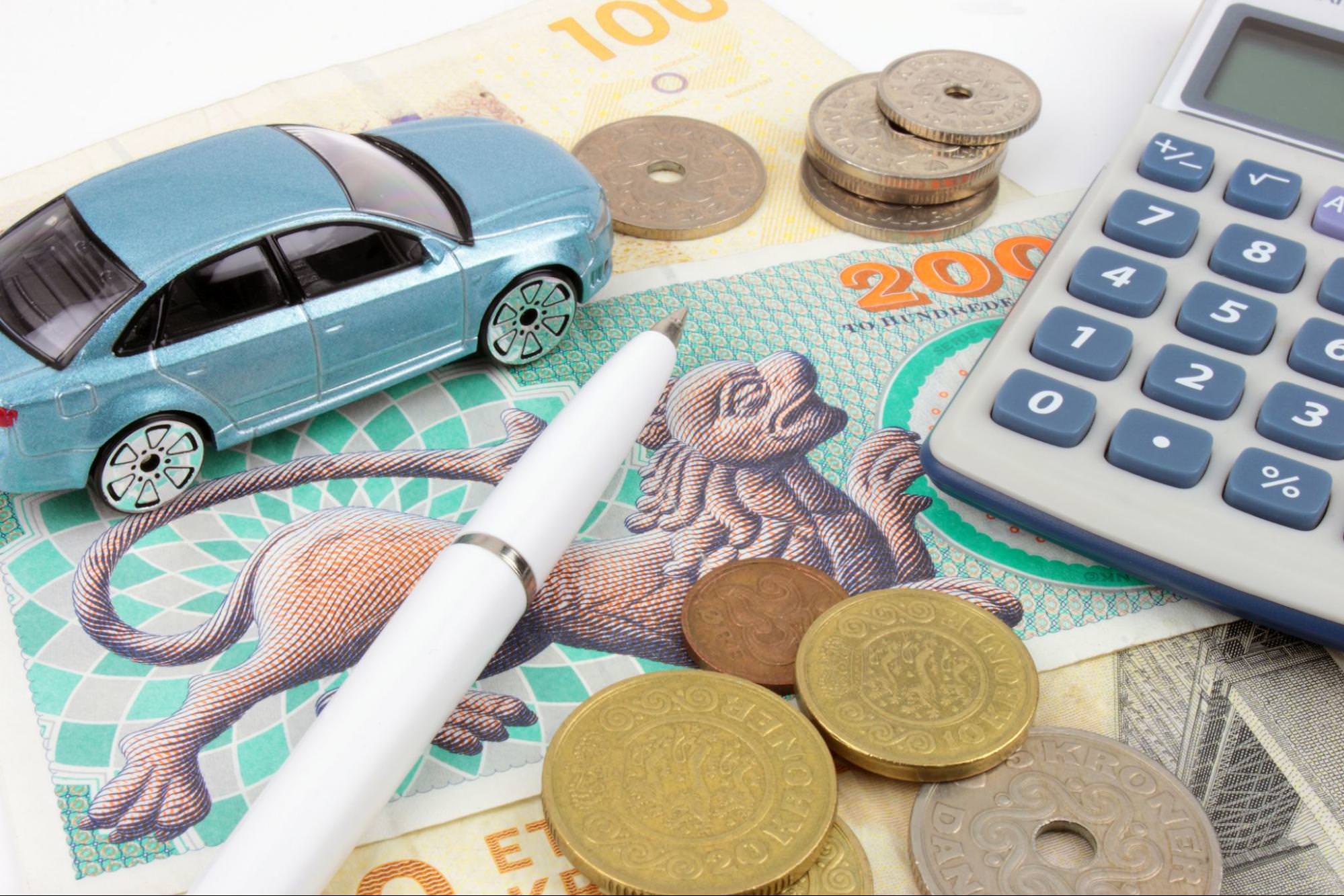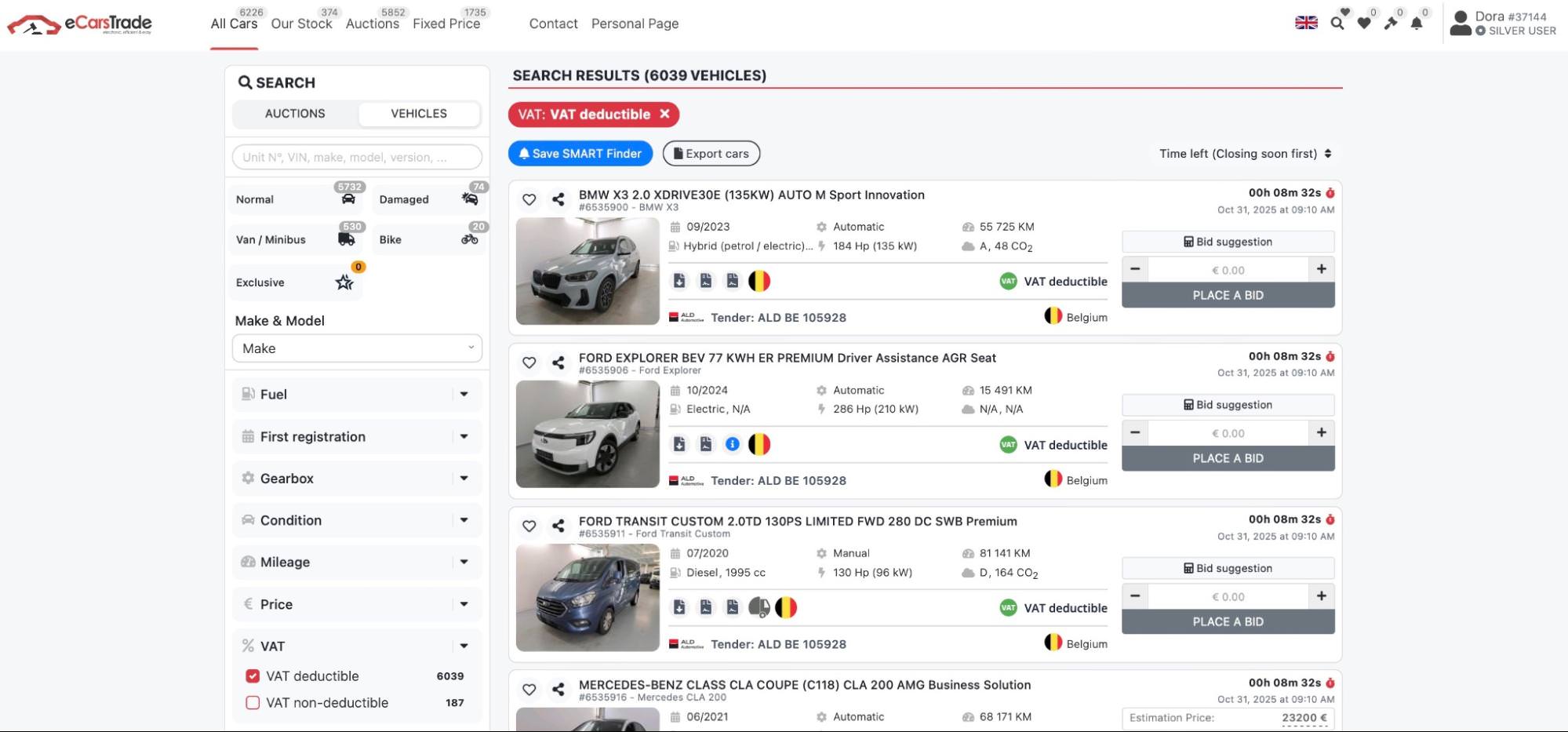- Blog
- Car Taxes in Denmark - Guide for Car Dealers
Car Taxes in Denmark - Guide for Car Dealers
Learn how to calculate car taxes in Denmark, check VAT schemes, and plan for 2026 tax updates to keep your prices accurate and sales profitable.

Owning a car in Denmark comes with several taxes. If you’re selling used cars, knowing these costs can help you guide your customers from the start so that they can plan their budget.
It also helps you set the right prices in the first place.
When you understand how each tax affects the final amount your buyer must pay, you can choose stock more wisely, and protect your profit on every car you sell. So, let’s see what car taxes there are in Denmark.
List of all motor taxes in Denmark
First, here’s a quick overview of the main motor taxes you’ll encounter in Denmark. We’ll see more details about each one below.
|
Tax name |
When it’s paid |
Applies to |
|
Registreringsafgift (Registration tax) |
Once, when you first register the vehicle in Denmark |
All newly registered vehicles, including imported used cars |
|
Grøn ejerafgift (Green tax)* |
Each year |
Older cars and some vans registered before July 1997 |
|
CO₂-based surcharge* |
Each year |
Passenger cars registered from July 2021 onwards |
|
Vægtafgift (Weight-based tax)* |
Each year |
Older vehicles and categories still taxed by weight |
|
Moms (VAT) |
Once, on car import/purchase |
Most vehicle sales |
|
Company car tax |
Monthly |
Employees and business owners using a company car privately |
❗ Cars only pay one of these annual ownership taxes (Ejerafgift). The scheme depends on their first registration date.
Motor taxes descriptions [Each tax from the table above - Registreringsafgift, Ejerafgift, Vægtafgift, VAT]
Now, let’s see more about each of these taxes.
► Registreringsafgift (Registration tax)
The Danish registration tax is somewhat famous among car taxes. That’s because it’s very high compared to most other EU countries, and it can even be larger than the car’s own pre-tax value.
So, how much does it cost?
For cars registered in 2025, the tax is calculated in three value levels on the car’s taxable value:
- 25% of the first DKK 72,900
- 85% of the amount from DKK 72,900 to DKK 226,500
- 150% of anything above DKK 226,500
These same rates apply to both new and used cars. The only difference is how the taxable value is determined.
For new cars, it is based on the Danish new retail price.
For imported used cars, authorities estimate the value by looking at what a comparable car would sell for on the Danish market, factoring in age, mileage, equipment, and condition.
You can look up recent valuations directly on the Motor Vehicle Agency’s website.
You pay this tax when you register the vehicle in Denmark, whether it’s brand new or imported as a used car.
► Ejerafgift (Annual ownership tax)
The second big tax, the annual ownership tax (Ejerafgift), comes in three versions, depending on when the car was first registered.
Each car only pays one of these annual tax versions, but the calculation method changes with the vehicle’s age and type.
- Vægtafgift (Weight-based tax): for older cars and some vans first registered before 1 July 1997. The yearly amount depends on vehicle weight, so heavier cars pay more.
- Grøn ejerafgift (Green ownership tax): for cars first registered between 1 July 1997 and 30 June 2021. It’s calculated from fuel economy (km/l); a more efficient car means a lower yearly tax.
- CO₂-based ownership tax: for cars first registered from 1 July 2021 onward. It’s based on CO₂ emissions per kilometre; higher emissions mean more tax, while electric cars pay the lowest amounts.
This is a recurring annual tax, so buyers should plan it as one of their costs.
As a dealer, you could check which scheme applies before listing a car so that you can give accurate cost estimates and make it easier for buyers to plan their budgets.
► Moms (VAT)
In Denmark, Value Added Tax (Moms) is charged at a standard rate of 25%.
You pay VAT once, either when you buy the car or when you import it. The rules depend on whether the car is new or used and which VAT scheme the seller uses.
- VAT scheme: VAT is added to the full sale price, and registered businesses can usually reclaim it later.
- Margin scheme: VAT is only charged on your profit margin, not on the entire price.
If you import a car from another EU country, you usually buy it at the net price (without VAT) and then declare the VAT in Denmark through your regular VAT return.
Cars coming from outside the EU are different because you pay VAT (and also customs duty) when the car enters Denmark.
So, before you buy a used car, always check which VAT scheme it is sold under. It tells you if you can reclaim VAT and helps you price your cars correctly.
► Company car tax
Employees using company car taxes for private purposes have to pay a company car tax.
In 2025, most employees are paying 22.5% of the car’s value per year, plus a small fee based on CO₂ emissions.
Electric cars are taxed more lightly because their registration tax is lower, which reduces the taxable value.
The tax is collected monthly through payroll as part of the employee’s regular income tax.
► Where to find Danish car tax calculators?
If you’re looking for reliable ways to estimate taxes, you might find these official calculators helpful:
There’s no official calculator for estimating the company car tax, but you can find clear rates and examples on the Danish Tax Agency’s website.

Tax rates by vehicle type
If you’re selling not only passenger cars, but also motorcycles, vans, EVs, and more, here’s a quick overview of tax rates by vehicle type that you can scan while pricing or advising buyers.
► Passenger cars
Passenger cars pay registration tax at 25%/85%/150% brackets based on Danish market value.
They also pay one annual ownership tax scheme (weight, green, or CO₂) depending on the date of the first registration.
► Electric vehicles
Denmark is one of many European countries that support EVs with reduced registration tax and low yearly charges.
Fully electric vehicles benefit from a lowered registration tax, as they get to deduct DKK 165,000 from the car’s taxable value before the tax is calculated.
EVs still pay annual ownership tax, but at much lower rates.
► Hybrids
In 2025, low-emission plug-in hybrids get a DKK 45,000 basic deduction and an extra reduction based on battery size, worth DKK 500 for each kilowatt-hour (up to 45 kWh).
This lowers the car’s taxable value before the registration tax is calculated.
They currently pay 65% of the calculated registration tax, but that share will rise gradually each year until it reaches 100% by 2035. Note that both deductions will end after 2025!
► Vans and commercial vehicles
Vans and other commercial vehicles follow different rules than private cars.
Their registration tax is lower, often around 30% to 50% of the normal rate for passenger cars, depending on how the vehicle is built and registered for use.
Many vans pay the annual weight-based tax rather than the CO₂ or fuel-efficiency tax, depending on when they were first registered.
► Motorcycles
Motorcycles in Denmark also pay a registration tax, but at lower rates than cars.
The rate is 45% on the first DKK 69,100 of value and 60% on the rest. There’s no annual ownership tax for motorcycles, only registration and insurance costs.
Changes in 2026
2026 will come with some changes in car taxes. The most important one is that the annual ownership tax for vehicles registered from 1 July 2021 will increase slightly.
According to the European Alternative Fuels Observatory, cars emitting low or zero CO₂ will have their annual tax rise from DKK 840 in 2025 to DKK 920 in 2026.
Also, the preferential treatment of hybrids will keep reducing after 2025.
They are paying 65% of the calculated registration tax in 2025, and that share will increase each year until it reaches 100% by 2035, making hybrids equal to petrol and diesel cars for registration tax.
So, don’t forget to keep these changes in mind when setting your prices or advising customers about next year’s costs.
Tax scenarios for Danish dealers
Now is the time to put theory into practice. Let’s see how these taxes apply in two common situations for Danish car dealers.
Importing a used vehicle from eCarsTrade
When you buy a used car from another EU country through eCarsTrade, you don’t pay customs duty because Denmark is part of the EU.
You’ll pay the registration tax (Registreringsafgift) once the car arrives and is registered in Denmark. Remember that the tax is calculated based on the Danish market value of that specific used car, not the invoice price.
VAT handling depends on the seller’s VAT scheme. On eCarsTrade, you can filter by VAT status and see it on each listing.

With the standard VAT scheme (VAT deductible), the seller charges VAT on the full price.
If you are a VAT-registered business, you usually reclaim it through your VAT return.
With the margin scheme (VAT non-deductible), VAT is only charged on the dealer’s profit margin. You cannot reclaim VAT on these cars, so factor that into your pricing.
Once the car is registered in Denmark, the buyer begins paying the annual ownership tax (Ejerafgift, Grøn ejerafgift, or CO₂-based ownership tax), depending on the car’s first registration date.
Importing a used vehicle from a non-EU country
If you import a car from outside the EU, you’ll need to pay customs duty and VAT when it enters Denmark, in addition to the registration tax.
Customs duty is usually 10% of the car’s customs value, and VAT is applied at 25% on top of that.
After clearing customs, the same Danish registration and ownership tax rules apply as for EU cars.
The car will be valued at its Danish market price when calculating the registration tax, and its annual tax will depend on its first registration year.
FAQ
► How much is the registration tax in Denmark?
For cars registered in 2025, the registration tax is 25% of the first DKK 72,900, 85% of the value between DKK 72,900 and DKK 226,500, and 150% of anything above that.
► Do used cars imported from the EU pay registration tax again?
Yes. Even if VAT has already been paid abroad, you still pay the Danish registration tax based on the car’s market value in Denmark.
► Can I reclaim VAT on used cars?
Only if the car is sold under the standard VAT scheme. Under the margin scheme, VAT is charged only on the dealer’s profit and you can't reclaim it.
► Do vans and commercial vehicles pay the same taxes as cars?
No. Vans usually have lower registration tax (around 30–50% of the normal passenger-car rate) and pay the annual weight-based tax instead of the CO₂-based tax.
► Will car taxes change in 2026?
Yes. The annual ownership tax for cars registered from 1 July 2021 will rise slightly, with zero-emission cars increasing from DKK 840 in 2025 to DKK 920 in 2026.
For plug-in hybrids, the reduced registration tax gradually increases after 2025 until it reaches 100% by 2035.
O nosso vasto inventário inclui várias marcas e modelos para satisfazer todas as suas necessidades, provenientes diretamente de reputadas empresas europeias de leasing, empresas de aluguer de curta duração e concessionários:

